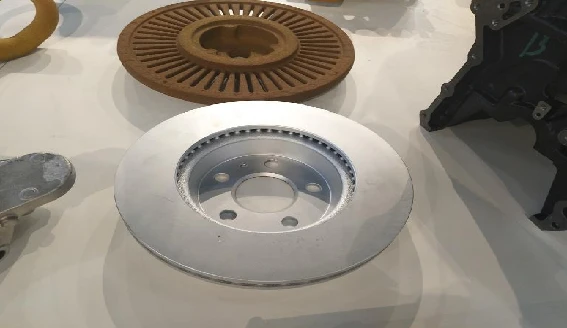The Fascinating World of Sand 3D Printing Revolutionizing Manufacturing
In recent years, the convergence of technology and traditional manufacturing techniques has led to groundbreaking innovations across various industries. One such development that has garnered significant attention is the use of sand in 3D printing, a process that is transforming the way we conceive and produce complex structures and components. This article explores the intricacies of sand 3D printing, its applications, benefits, and the future it holds for manufacturing and beyond.
Understanding Sand 3D Printing
Sand 3D printing, also known as binder jetting with sand, involves the use of granular sand materials combined with a binding agent to create intricate three-dimensional objects. Unlike conventional 3D printing methods that utilize plastics or metals, this technology leverages the abundant and environmentally friendly nature of sand as its primary raw material. The process begins with a digital model, typically generated through computer-aided design (CAD) software. The 3D printer then deposits layers of sand, binding them together using a liquid binder to form the desired shape.
Applications of Sand 3D Printing
The versatility of sand 3D printing has enabled its application across various sectors. One of the most prominent uses is in the foundry industry, where it plays a crucial role in the creation of complex molds for metal casting. Traditional mold-making techniques can be labor-intensive and time-consuming; however, with sand 3D printing, manufacturers can produce molds with intricate geometries in a fraction of the time. This not only enhances production efficiency but also allows for greater design freedom.
Additionally, sand 3D printing is making waves in the construction industry. In recent projects, researchers and architects have been experimenting with sand printing technologies to create sustainable building structures. This innovative approach to construction utilizes locally sourced sand, minimizing material transport and waste. Furthermore, the ability to print components on-site has the potential to revolutionize the way we think about housing and infrastructure development.
Benefits of Sand 3D Printing
sand 3d

The advantages of sand 3D printing are numerous, making it a compelling alternative to traditional manufacturing methods. One of the most significant benefits is its sustainability. Sand is one of the most abundant resources on Earth, and by using it as a primary material, the environmental impact of production is significantly reduced. Additionally, the process generates minimal waste compared to traditional subtractive manufacturing processes, where material is cut away to create a product.
Cost-effectiveness is another key advantage of sand 3D printing. Reduced material waste, shorter production times, and decreased labor costs contribute to overall savings. Companies that adopt this technology can streamline their operations and reduce overheads, enabling them to remain competitive in a rapidly evolving marketplace.
Moreover, the customization capabilities of sand 3D printing cannot be overstated. Manufacturers can easily make adjustments to designs based on specific requirements without incurring significant costs or time delays. This level of flexibility allows for the production of tailored parts and components that meet the unique needs of clients and industries.
The Future of Sand 3D Printing
As technology continues to evolve, the future of sand 3D printing looks promising. Ongoing research and development are focused on enhancing the material properties of printed objects, such as improving strength and durability. Innovations in binder materials also aim to increase the longevity and performance of sand-printed items.
Moreover, as industries become more mindful of their carbon footprints, the demand for sustainable manufacturing processes will likely drive the growth of sand 3D printing. With the potential to create everything from intricate sculptures to robust industrial components, it positions itself as a leader in the movement toward greener manufacturing practices.
In conclusion, sand 3D printing is not merely a technological curiosity; it represents a significant shift in manufacturing paradigms. With its capacity for sustainability, cost-effectiveness, and design flexibility, this innovative approach is set to redefine industries and inspire new directions in both production and construction. As we look to the future, the full potential of sand 3D printing is just beginning to be realized, heralding a new era of manufacturing excellence.
Post time:Th12 . 29, 2024 13:58
Next:sand casting mass production
